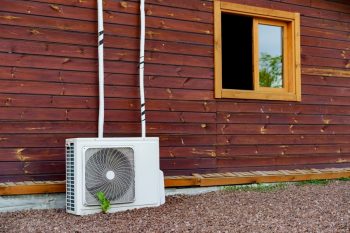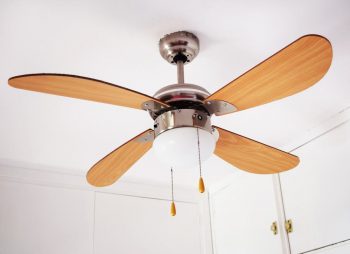
In the world of ceiling fans, understanding the terminology is key to finding the right fan for your needs. One term that often comes up is “CFM”, but what exactly does it mean, and why is it important? This comprehensive guide will walk you through everything you need to know about CFM and its significance when choosing the perfect ceiling fan for your space.
“CFM” in ceiling fans stands for Cubic Feet per Minute. It is a measurement of the volume of air that a ceiling fan can move in a minute when it’s running at maximum speed. The higher the CFM, the more air the fan can move, thus, the better it can cool the room. Factors such as RPM, blade size, and blade pitch can affect a fan’s CFM. It’s crucial to consider the CFM rating when choosing a ceiling fan to ensure it can efficiently cool your space.
What is CFM?
CFM, or cubic feet per minute, is a measure of the volume of air that a ceiling fan can move in a minute when it’s running at maximum speed. Essentially, the higher the CFM, the more air the fan can move, and the better it can cool the room.
Factors Affecting CFM
Several factors can affect the CFM of a ceiling fan, including:
- RPM (Rotations per Minute): The number of times the fan blades make a full rotation every minute. More rotations typically mean more air movement.
- Blade Size: Larger blades can move more air due to their larger surface area.
- Blade Pitch: The angle at which the blade is tilted, which allows it to displace air.
The Importance of CFM in Ceiling Fans
When choosing a ceiling fan, it’s crucial to consider the CFM rating to ensure that the fan can efficiently cool the room. Fans with higher CFM ratings are generally more effective at cooling larger spaces. However, it’s also essential to consider other factors such as energy efficiency, motor type, and blade design to find the best ceiling fan for your needs.
How CFM Affects Energy Consumption
The CFM of a ceiling fan can impact its energy consumption. The ratio of CFM to watts (CFM/W) is a key performance and energy efficiency indicator. Ceiling fans with a high CFM and low power consumption are more efficient at cooling.
CFM Standards and Guidelines
There are regulatory standards and guidelines specifying CFM requirements for ceiling fans. The Energy Conservation Program has established energy conservation standards for ceiling fans. The Energy Star program also provides key product criteria for ceiling fan efficiency requirements, including minimum efficiency (CFM/W) and minimum high-speed airflow (CFM) based on the fan’s diameter.
Ideal CFM Based on Room Size
The ideal CFM for a ceiling fan depends on the size of the room. Here are some general guidelines:
- For rooms less than 200 sq. ft., choose a fan with a CFM between 2,000 and 3,000.
- For rooms between 200 and 300 sq. ft., choose a fan with a CFM between 3,000 and 4,000.
- For rooms between 300 and 450 sq. ft., choose a fan with a CFM between 4,000 and 6,000.
- For rooms larger than 450 sq. ft., choose a fan with a higher CFM.
In conclusion, understanding CFM and how it affects the performance and efficiency of a ceiling fan is crucial when making a purchase. A fan with the right CFM for your space will ensure efficient cooling and optimal energy use.
Frequently Asked Questions
What is RPM and how does it affect CFM in ceiling fans?
RPM stands for Rotations per Minute, which refers to the number of times the fan blades make a full rotation every minute. In the context of CFM, a higher RPM generally means a higher CFM because more rotations typically result in more air movement.
What is the Energy Star program and how does it relate to CFM in ceiling fans?
The Energy Star program is a voluntary program run by the U.S. Environmental Protection Agency that promotes energy efficiency. In terms of ceiling fans, the program provides key product criteria for ceiling fan efficiency requirements, which include minimum efficiency (CFM/W) and minimum high-speed airflow (CFM) based on the fan’s diameter.
What factors should I consider besides CFM when choosing a ceiling fan?
Besides CFM, you should also consider factors such as energy efficiency, motor type, blade design, the size of your room, and your personal style preferences when choosing a ceiling fan.
Can I use a ceiling fan with a high CFM in a small room?
Yes, you can use a ceiling fan with a high CFM in a small room. However, it may not be as energy efficient because the fan will be moving more air than necessary. It’s best to choose a fan with a CFM that’s appropriate for the size of your room.
How can I find out the CFM of a ceiling fan?
The CFM of a ceiling fan is usually listed in the product specifications or on the packaging. You can also contact the manufacturer or retailer if you can’t find this information.












